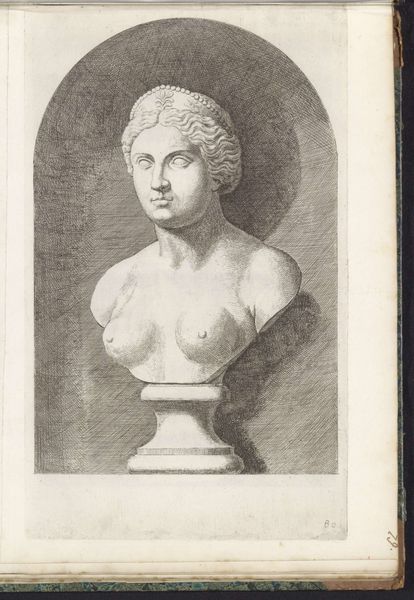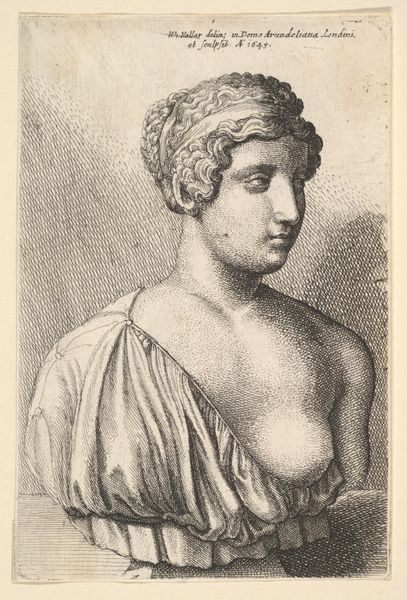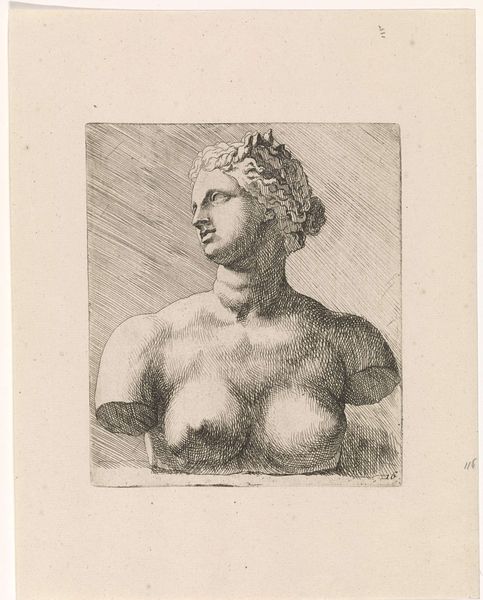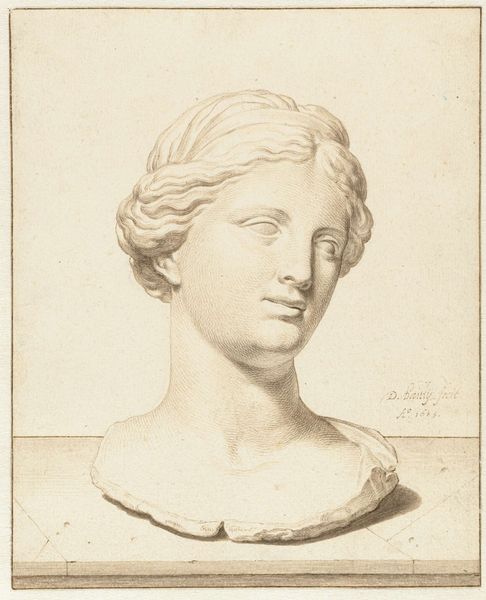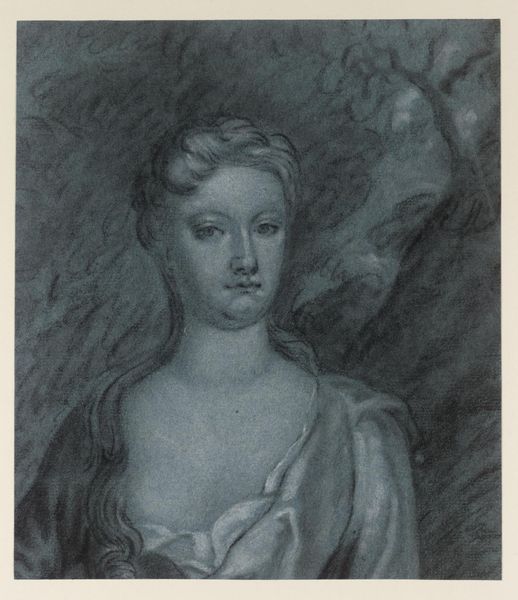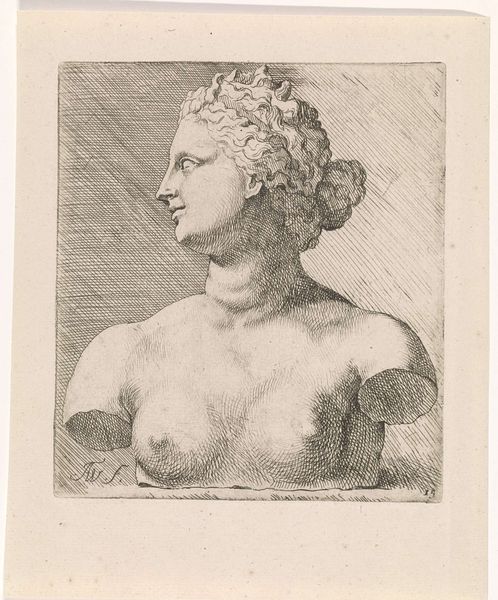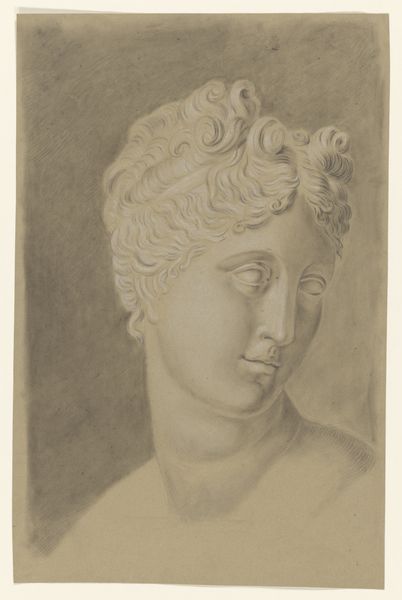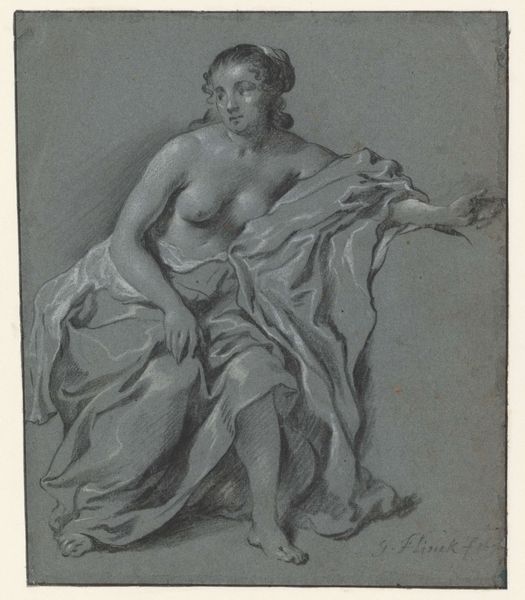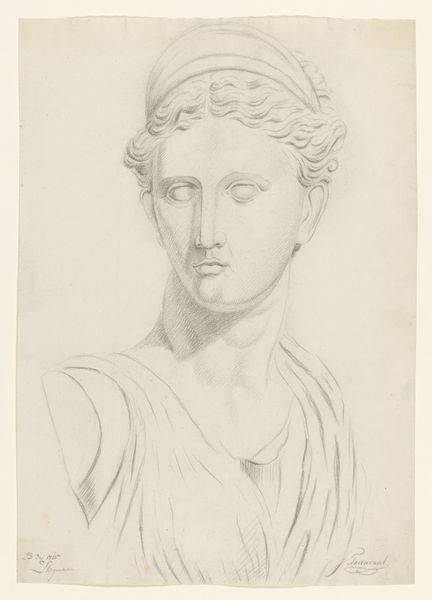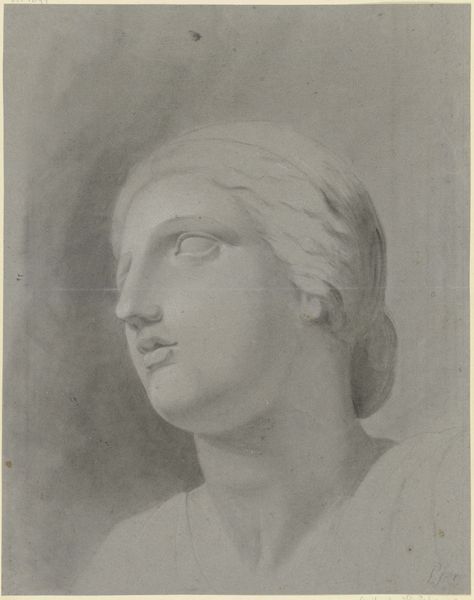
drawing, charcoal
#
portrait
#
drawing
#
neoclacissism
#
charcoal drawing
#
charcoal
#
academic-art
#
nude
#
portrait art
Dimensions: height 445 mm, width 286 mm
Copyright: Rijks Museum: Open Domain
Curator: This drawing by Jordanus Hoorn, "Borstbeeld van een vrouw," made in 1771, is quite striking in its muted palette. I find the overall impression to be… somewhat ghostly. What’s your initial take? Editor: Yes, “ghostly” is a good word. There's a softness, almost an ethereal quality, to the charcoal drawing. Given the time it was created, I can't help but immediately see how this artwork reflects Neoclassical artistic standards and the public's expectation for art at the time. Curator: Absolutely. Think about the prevailing power structures; who commissioned portraits like these and what did it signify about their status? But beyond its function, there's also this interesting tension between the academic-art style, the idealized beauty standards of the time, and the subject being nude. That pushes beyond the simple aesthetic appeal of the Neoclassical movement. What about you? Editor: Considering the role of the Academy in shaping artistic taste, its interesting to contemplate this work. The institutions would set parameters for how artists would operate and also influence not only patronage, but public perceptions. There is also, as you pointed out, a bit of sensuality about this figure. It can't be overlooked because in those years nudity also held significant, even philosophical, symbolism beyond mere aesthetics. Curator: Exactly! The question I keep coming back to is, how does viewing such an image affect today's audiences? Considering historical norms around female representation versus contemporary dialogues surrounding gender, sexuality, and objectification of the female body. Does our reading change depending on who views it? A woman? A person of color? A queer person? Editor: Yes, and that shifts over time as socio-political discourses change. This drawing serves as a marker to examine our shifting values. When seen in relation to the art market and museological setting, you must remember it also influences both how such artworks circulate and who has access to seeing them. Curator: It all speaks to how art remains a relevant battleground for discussions around power and identity. Food for thought! Editor: Indeed. A lens into our ever-evolving perception.
Comments
No comments
Be the first to comment and join the conversation on the ultimate creative platform.
